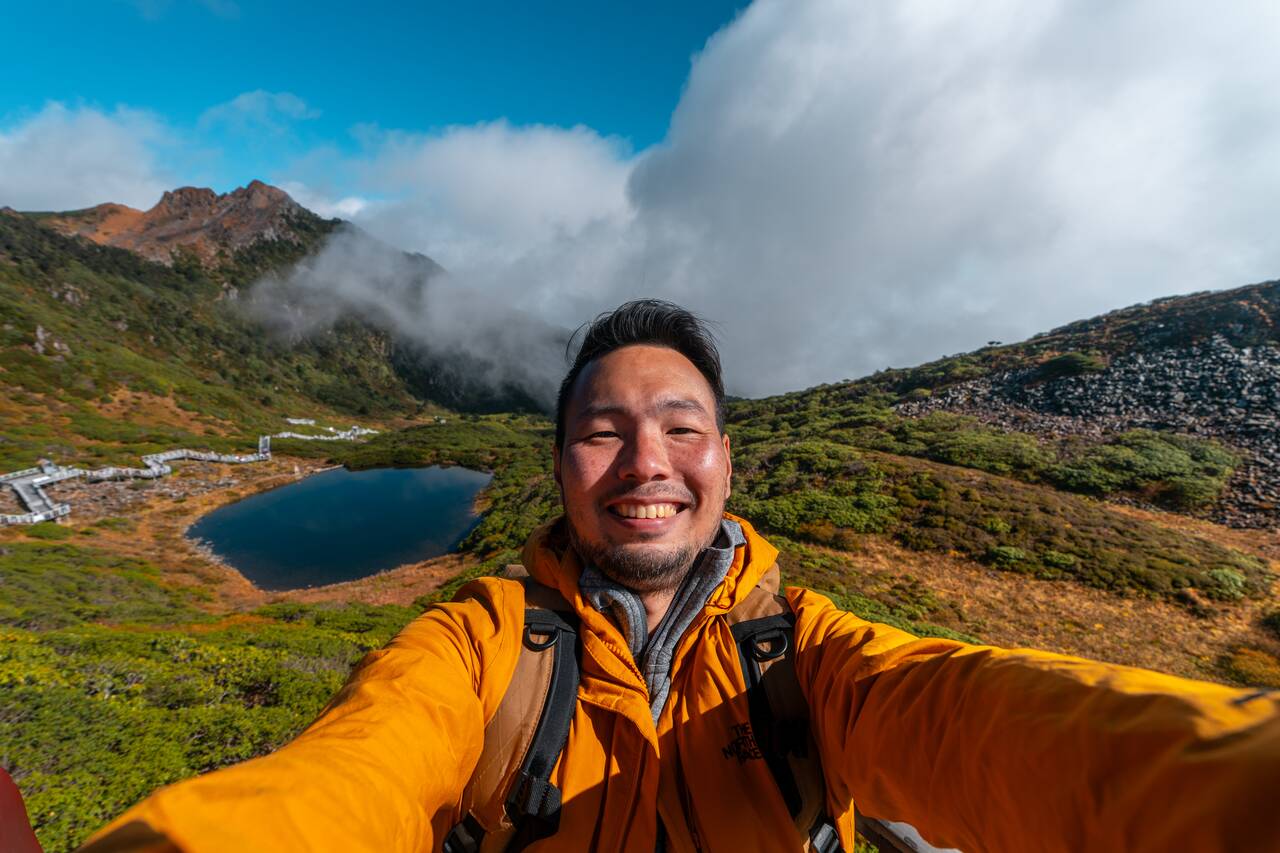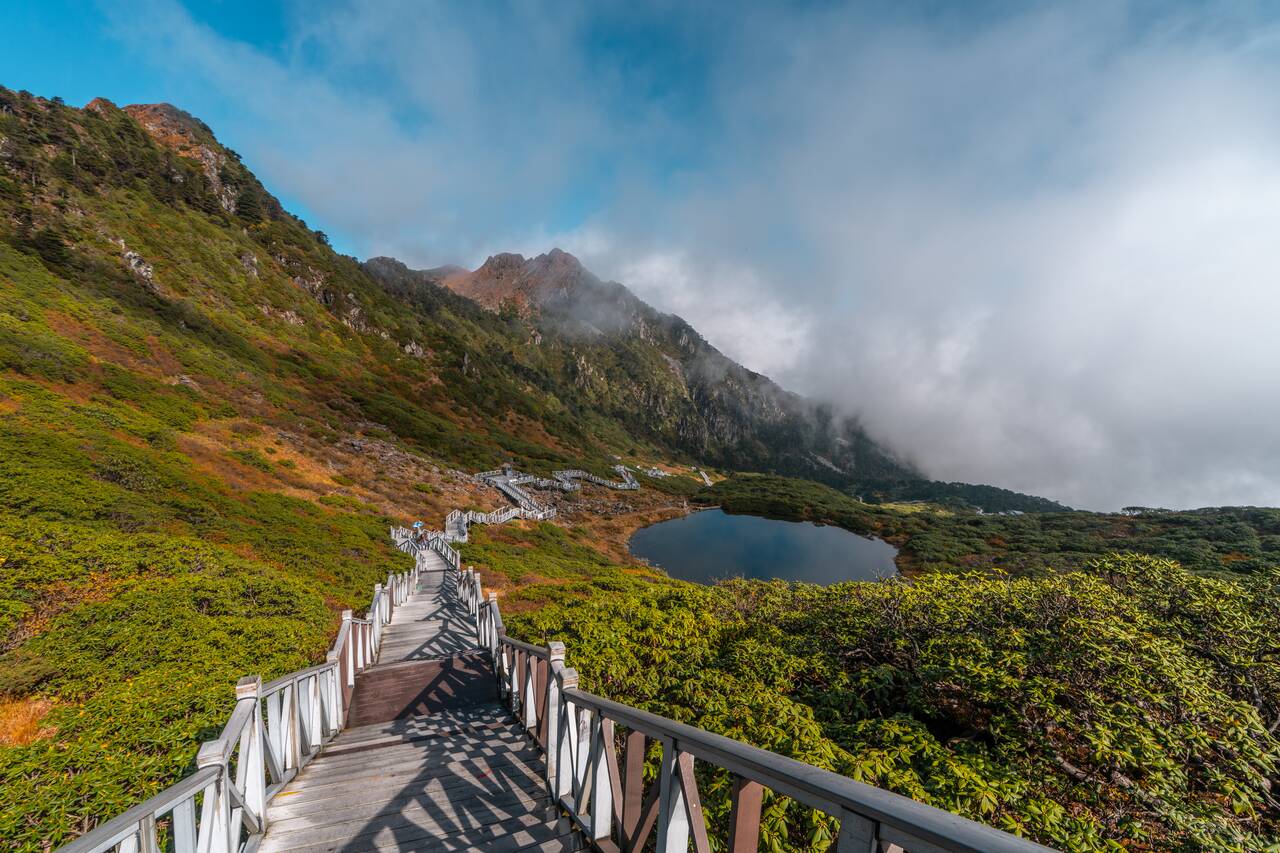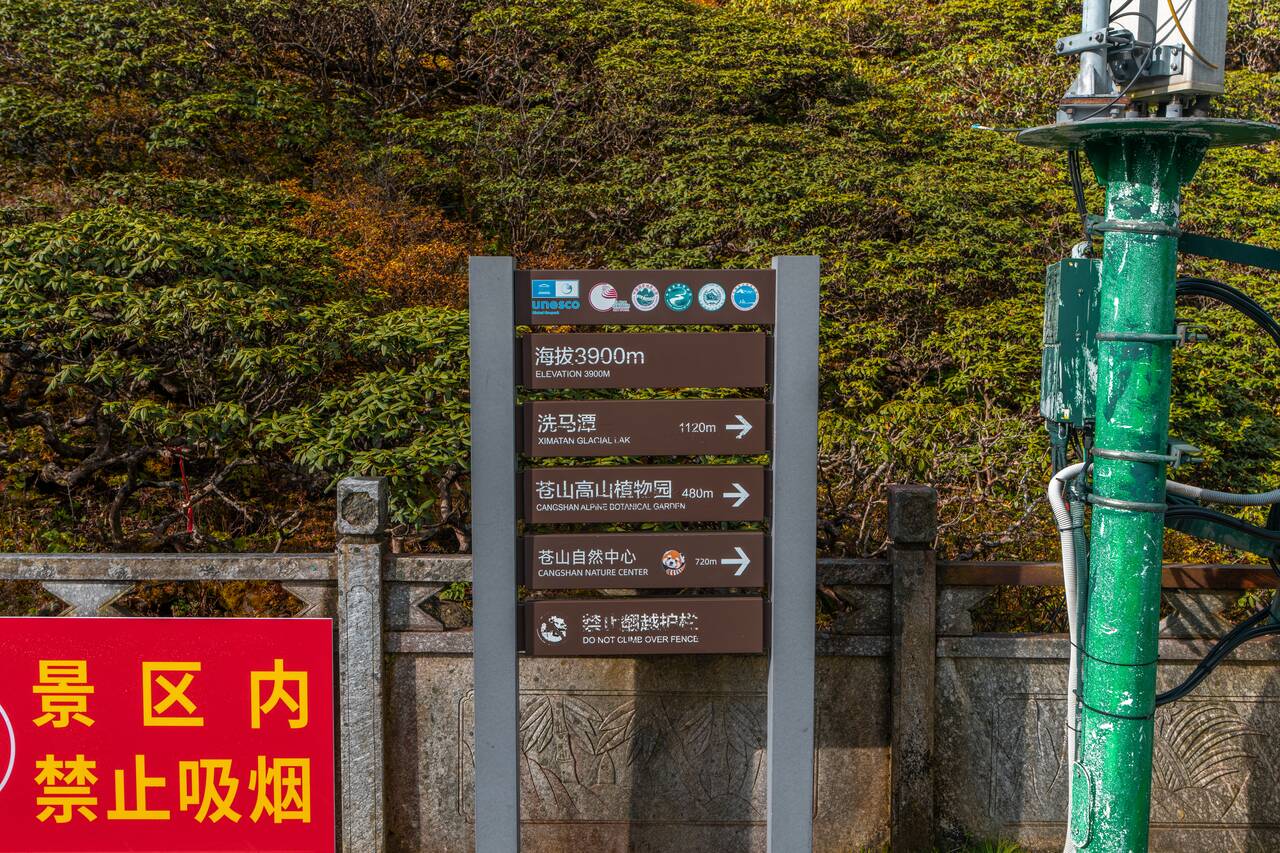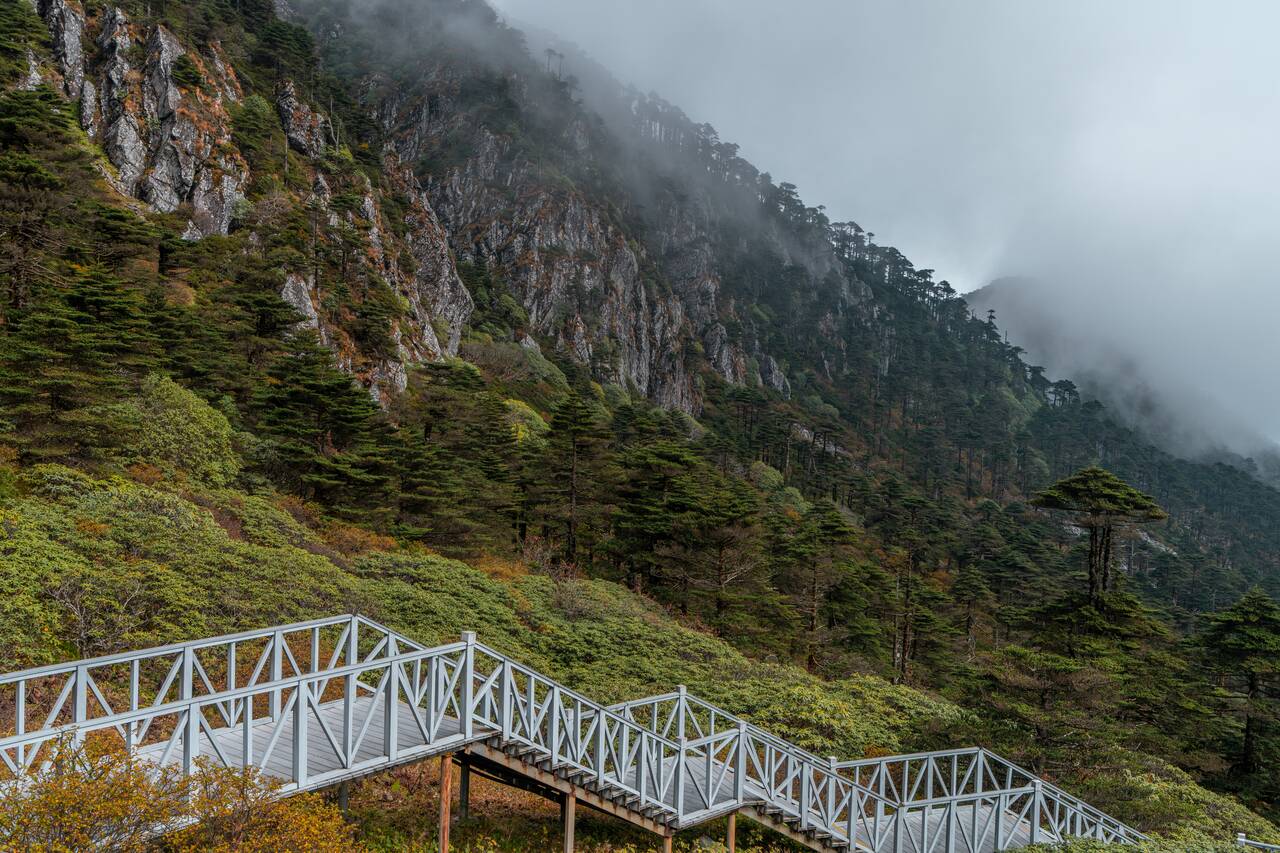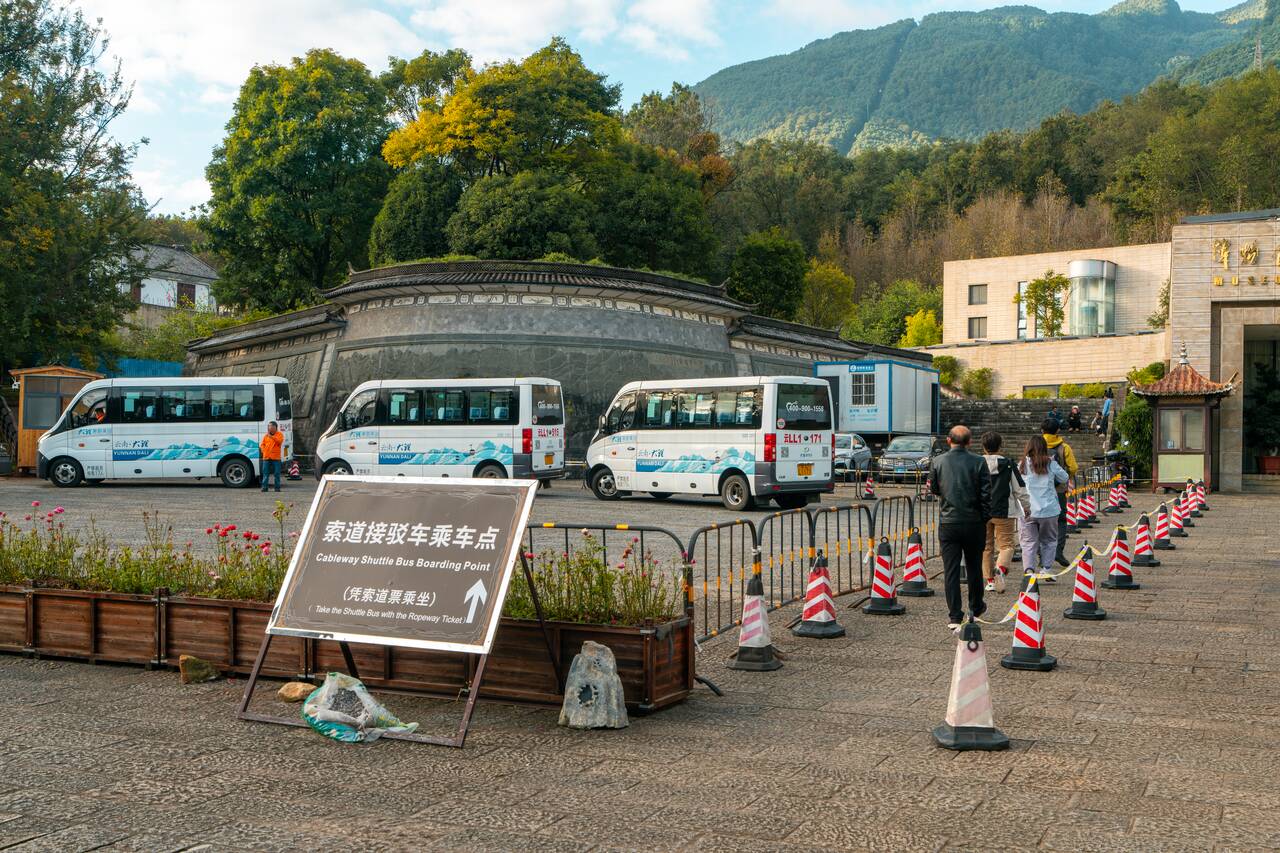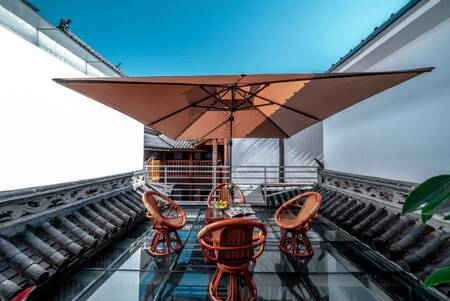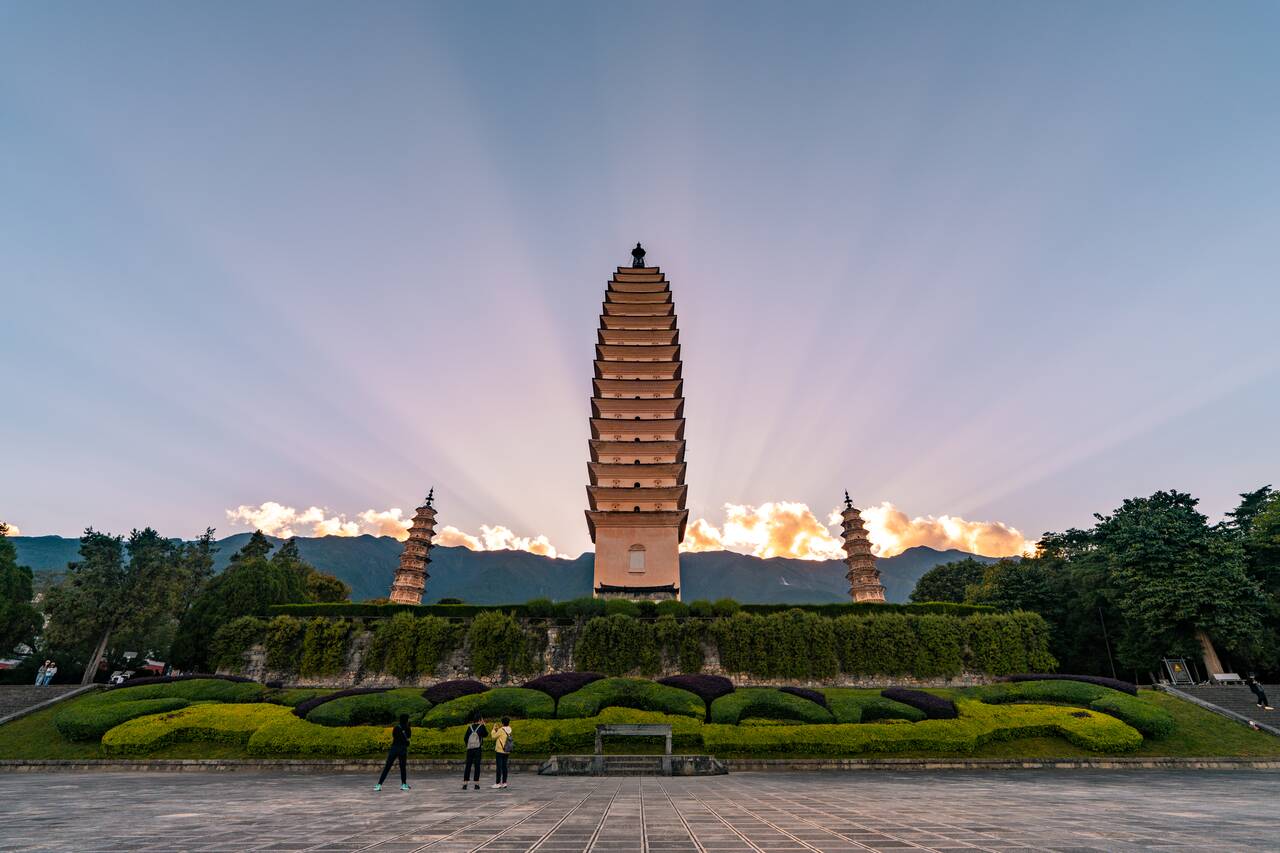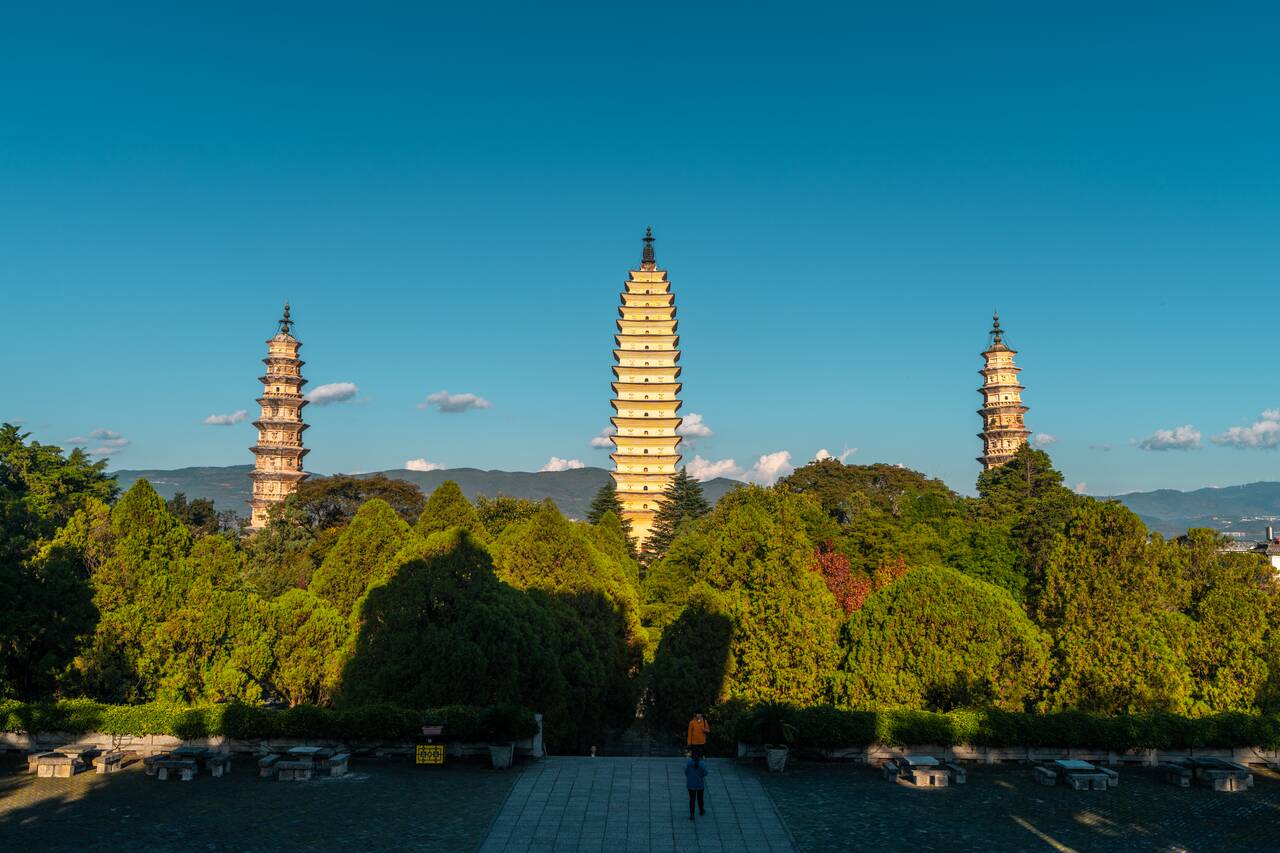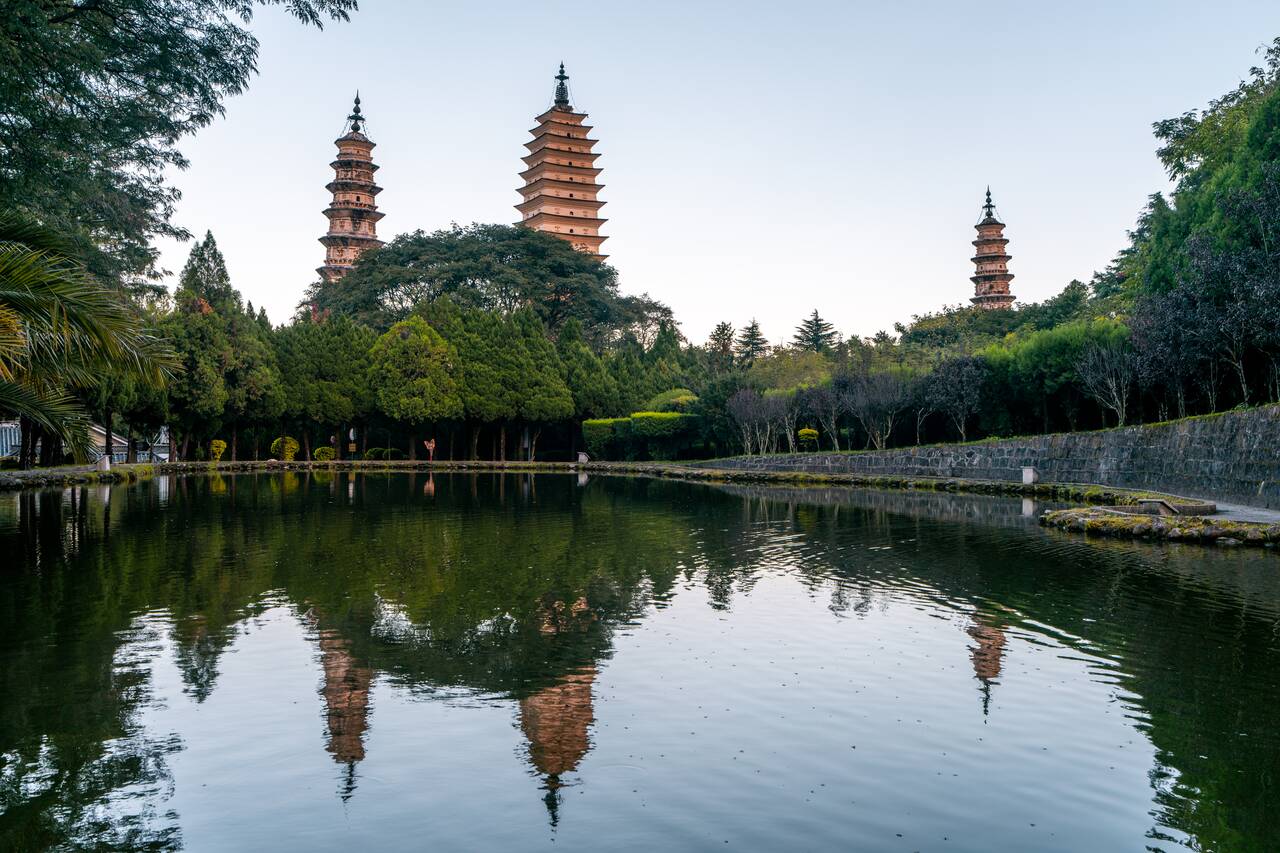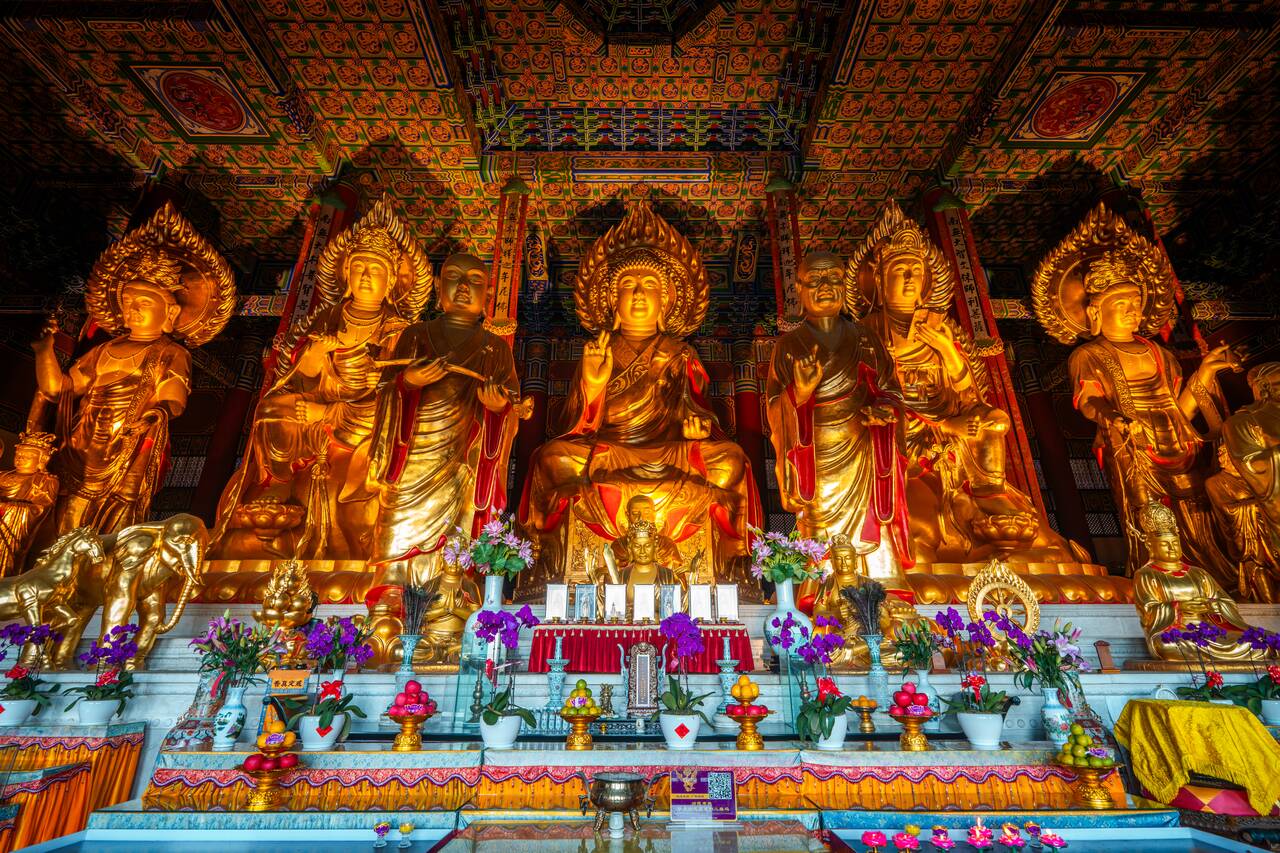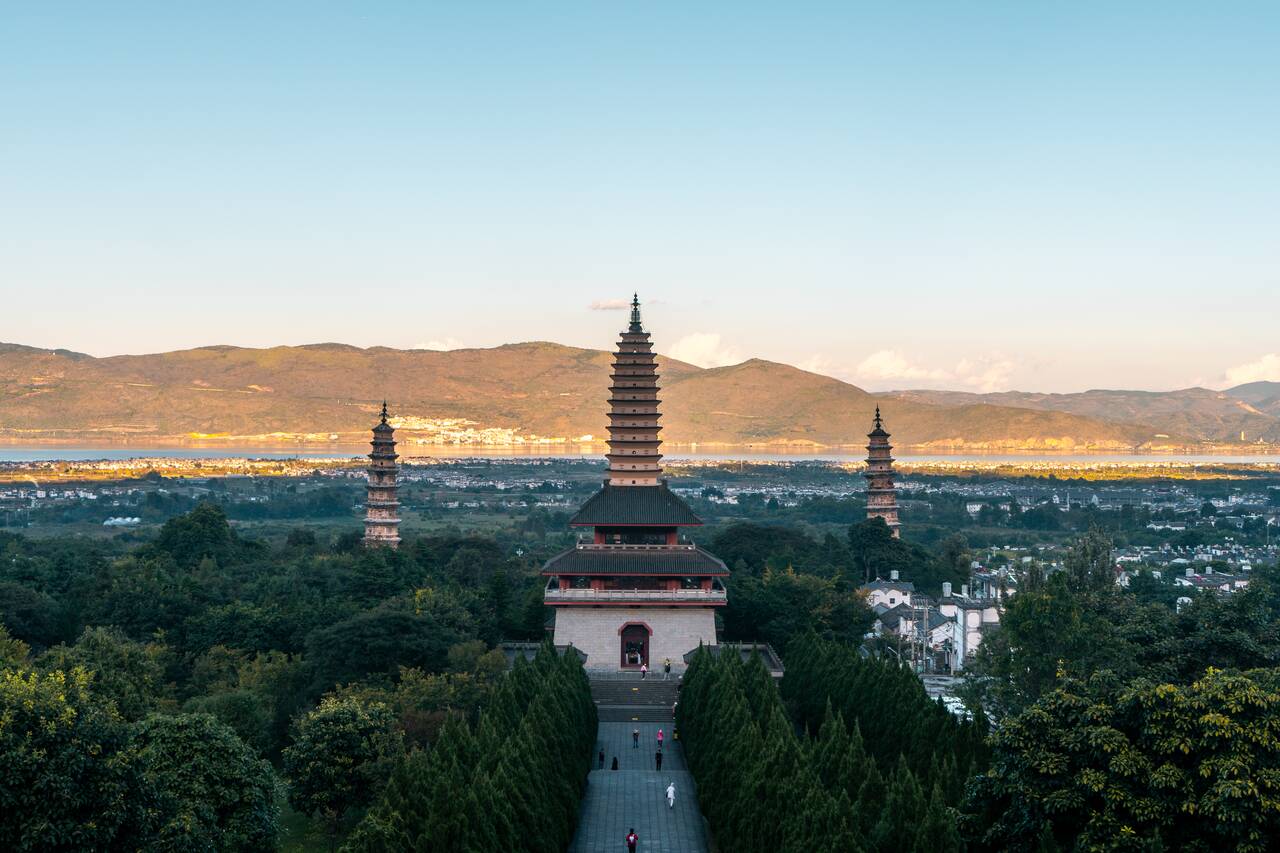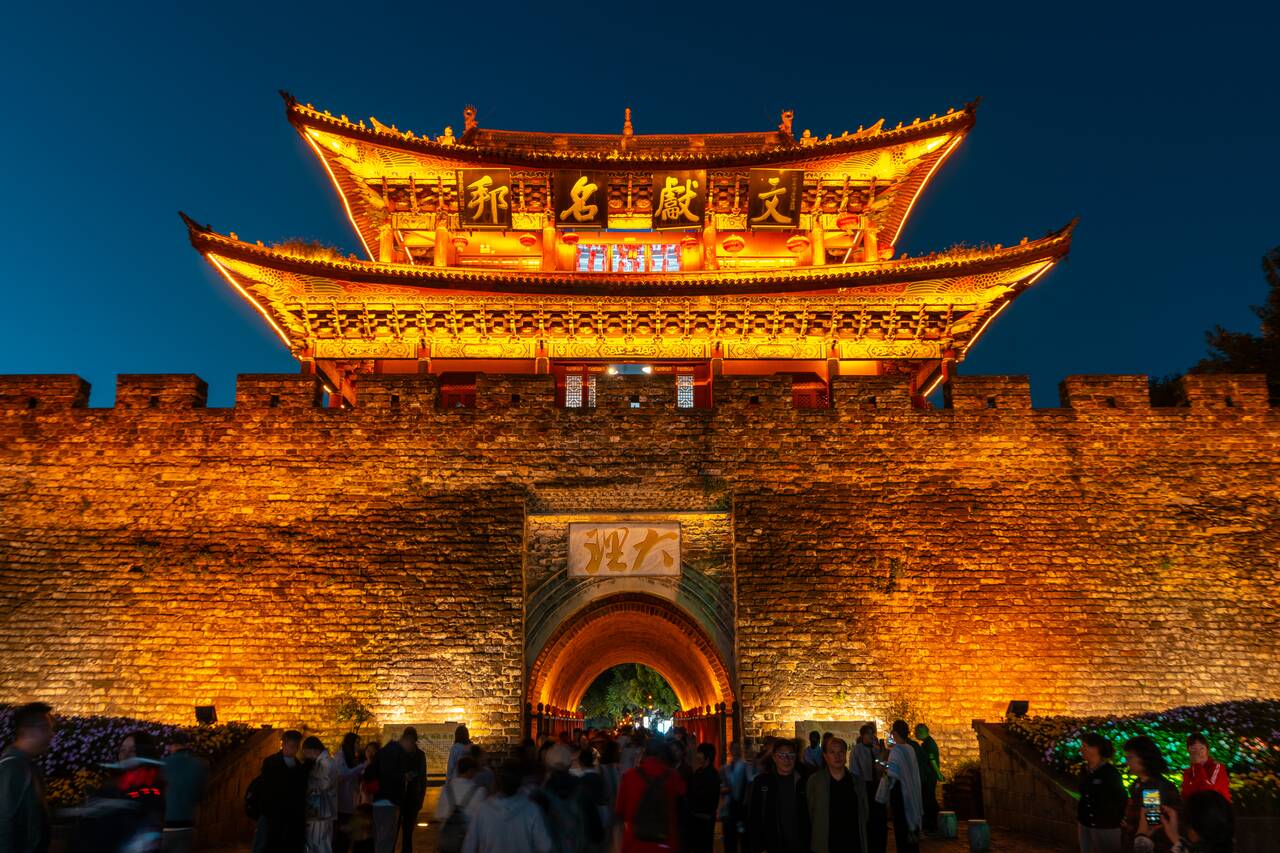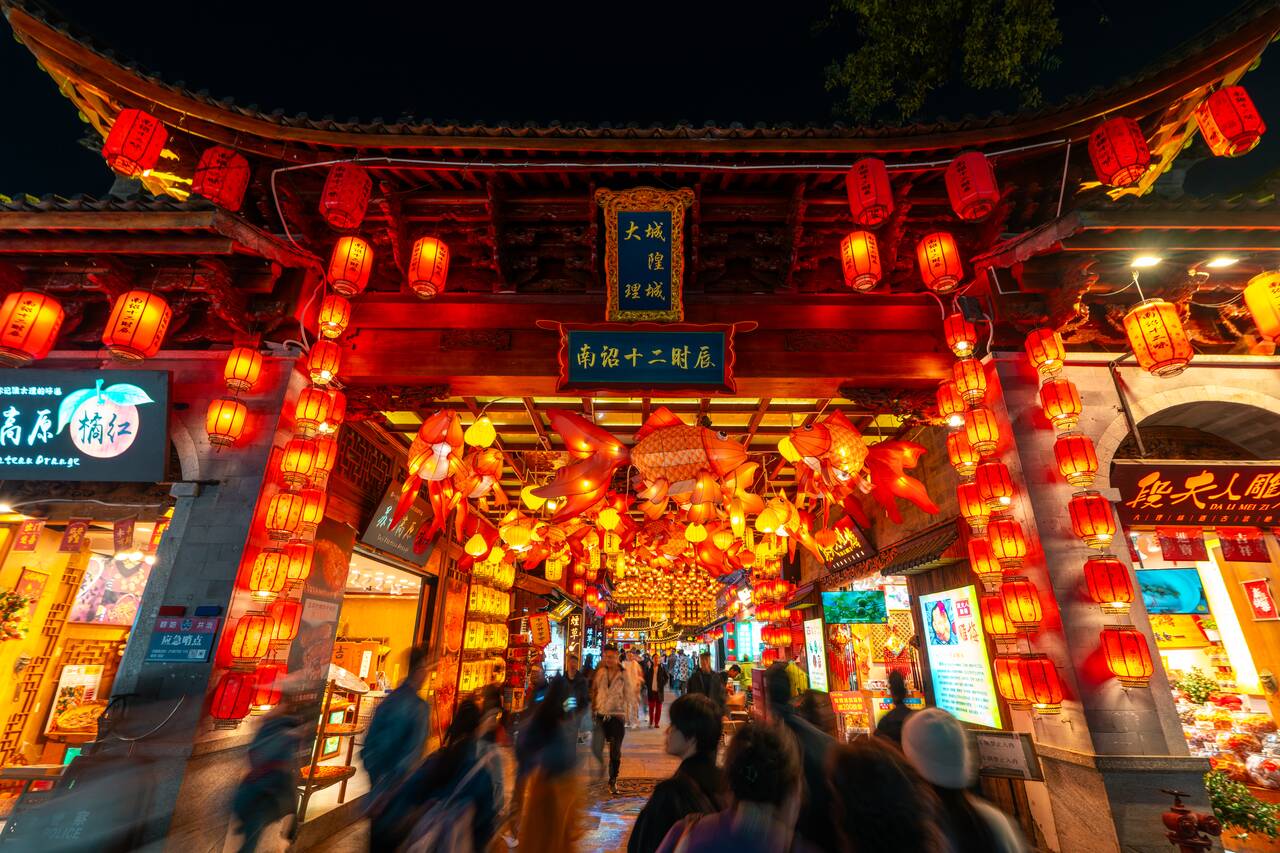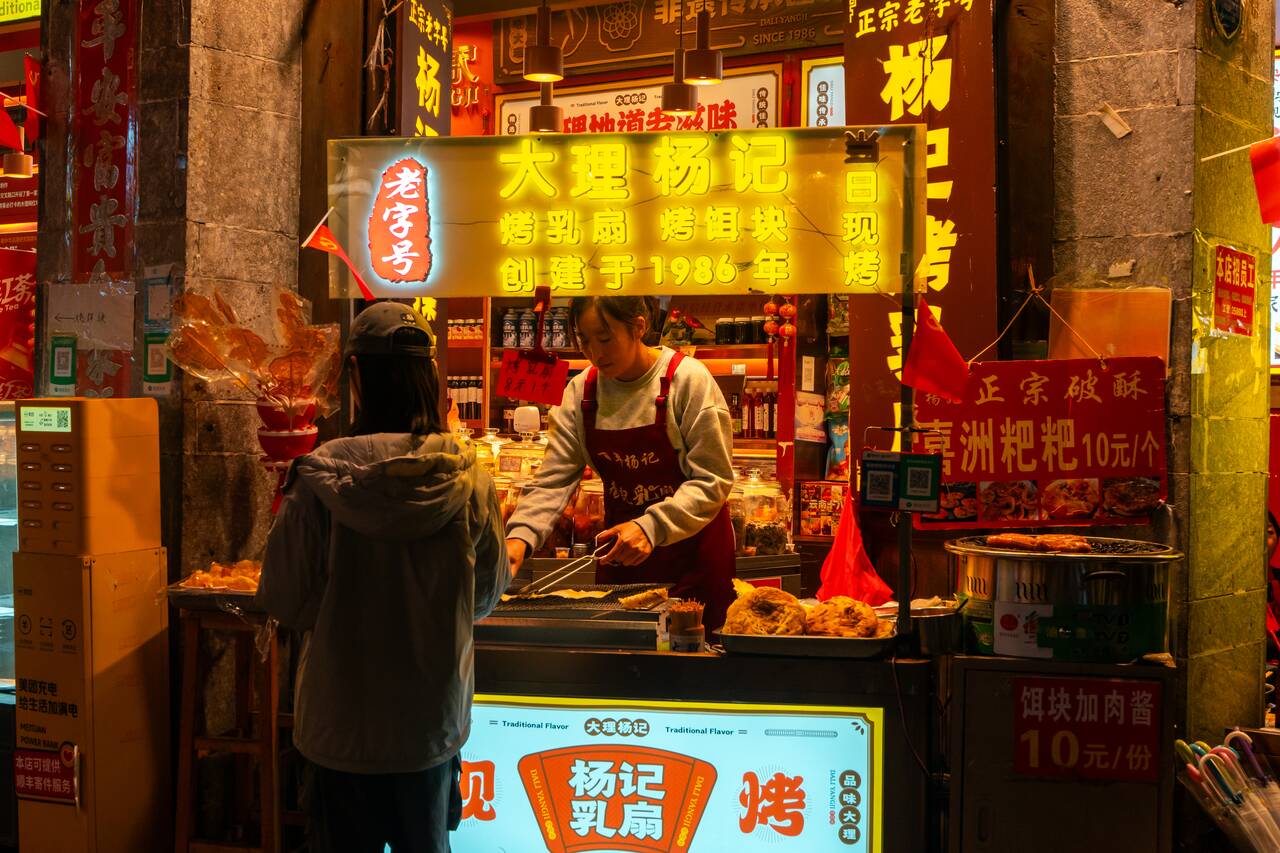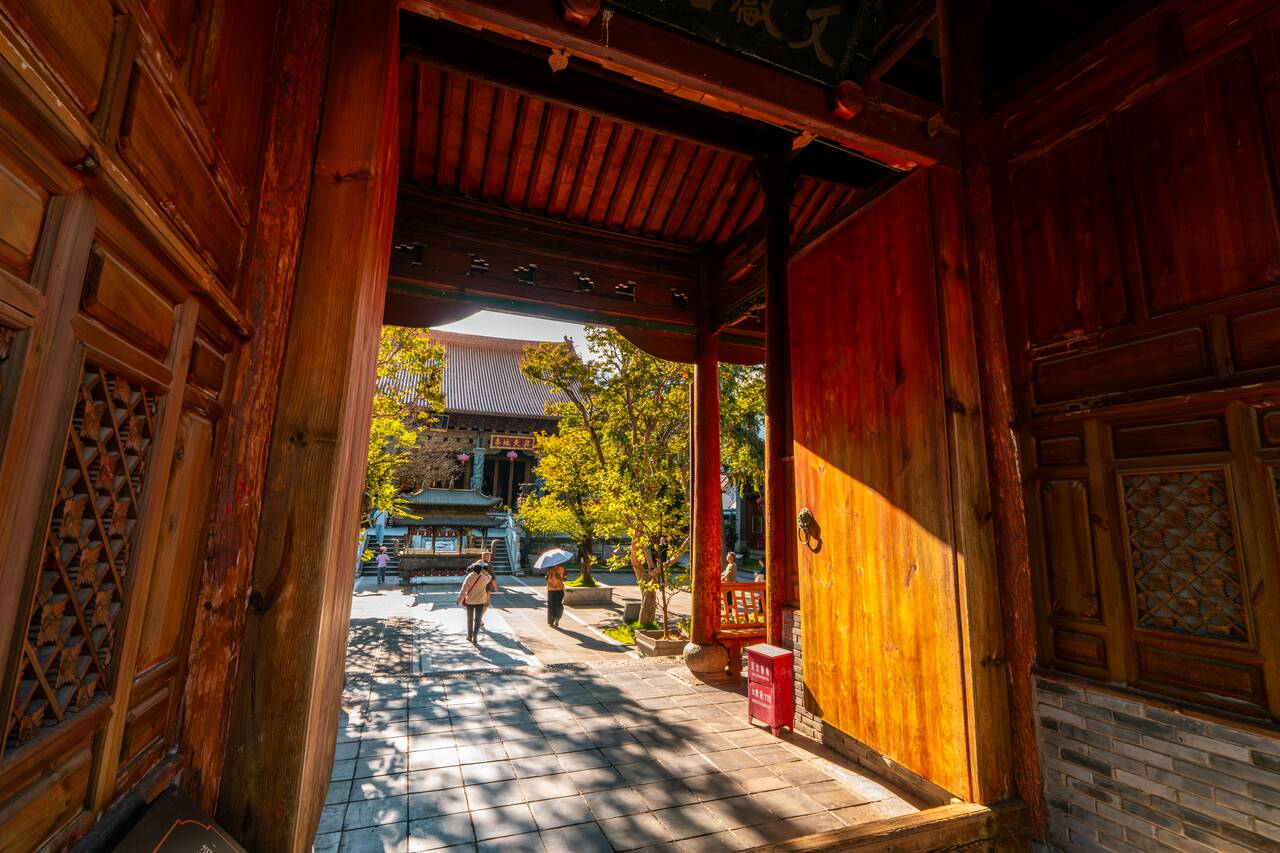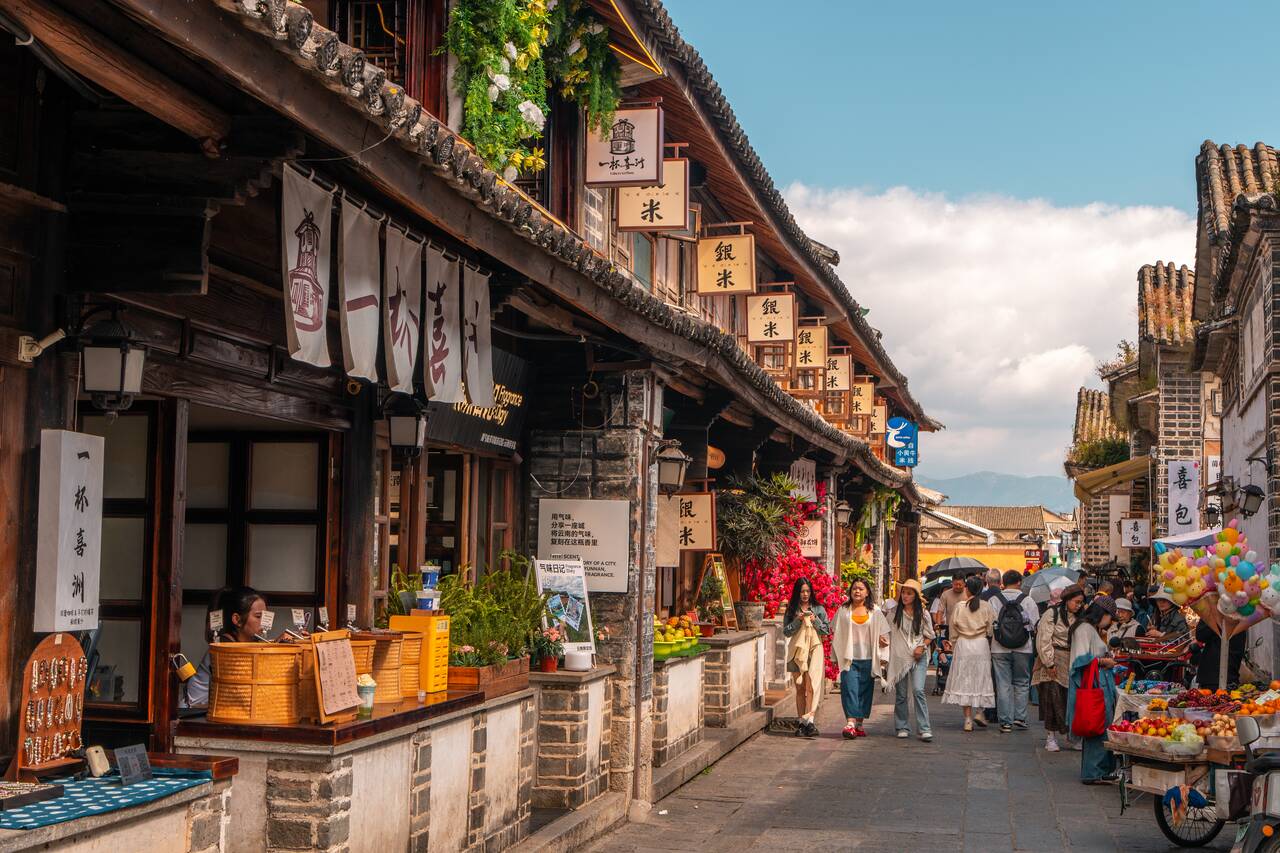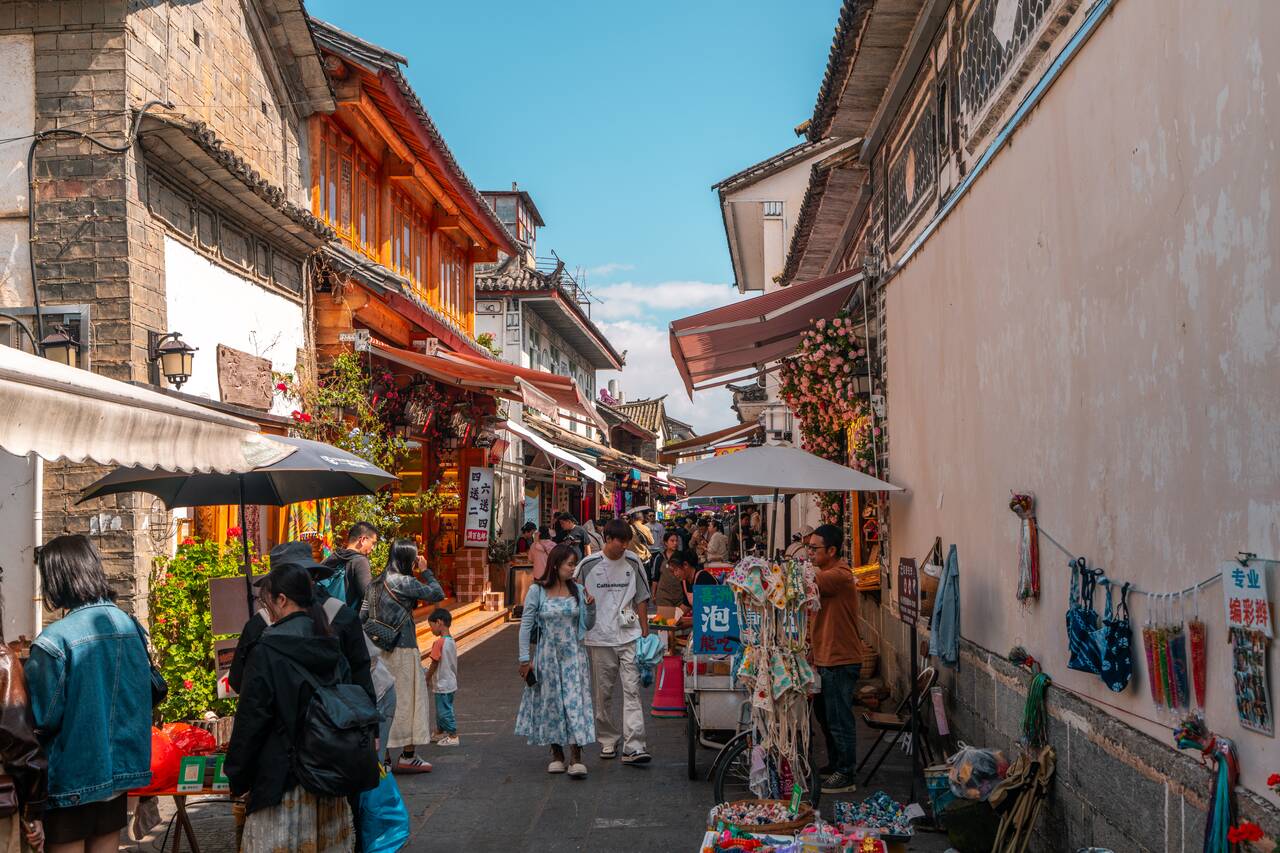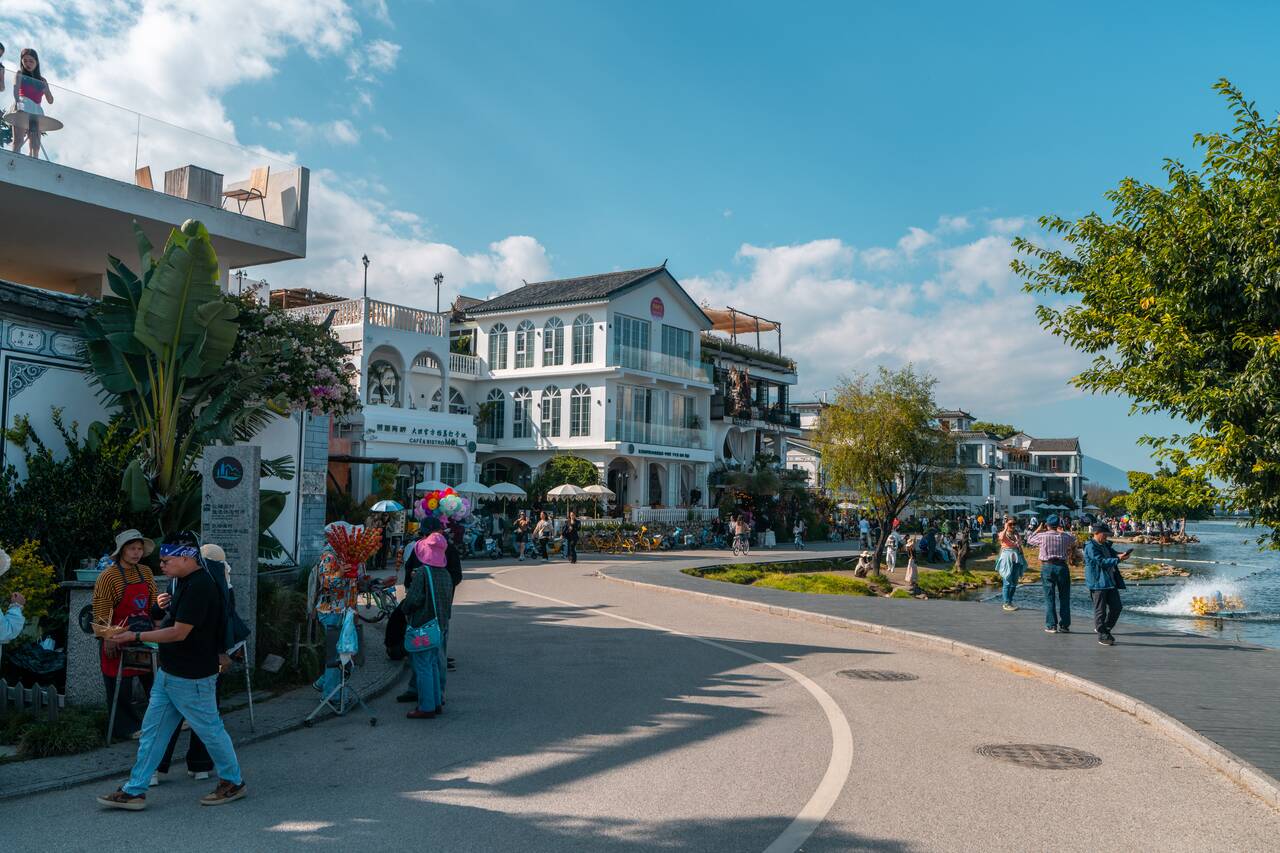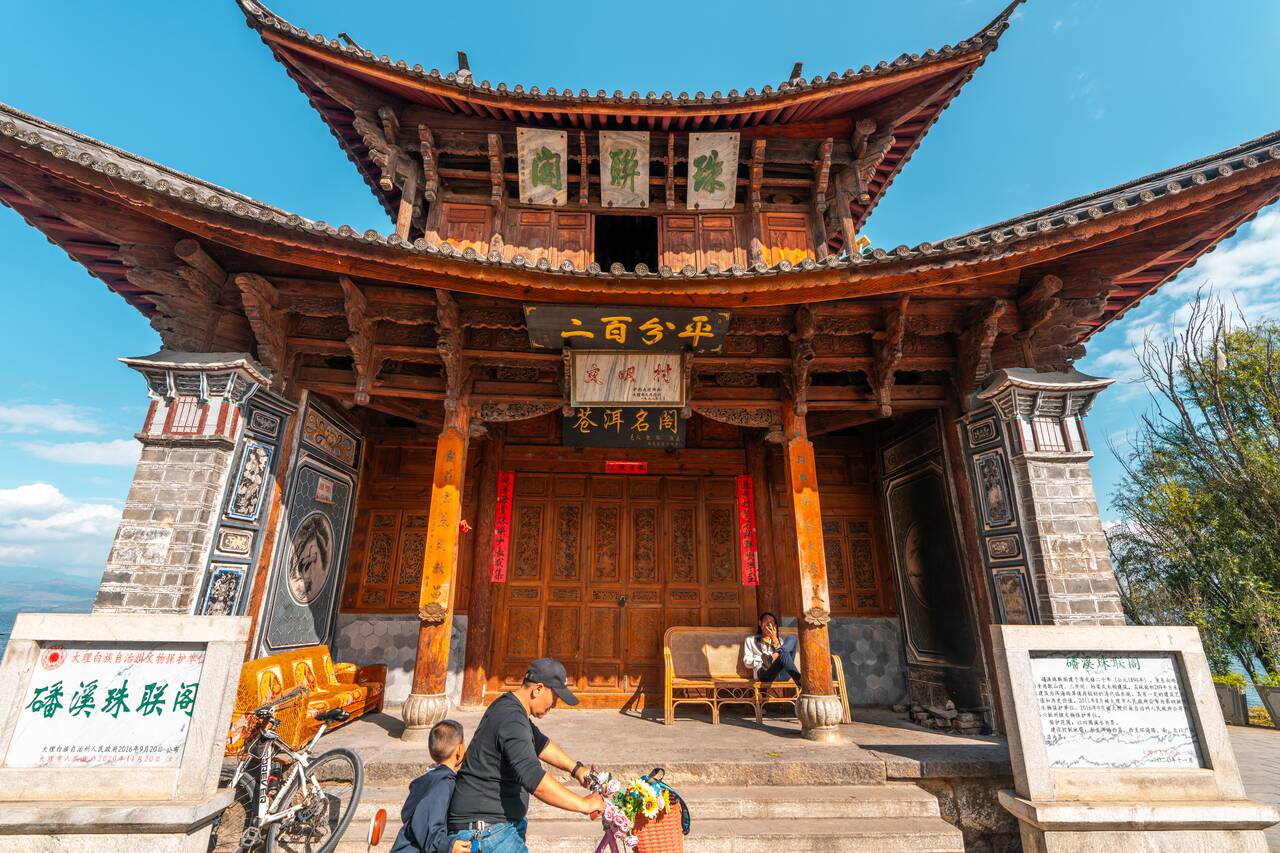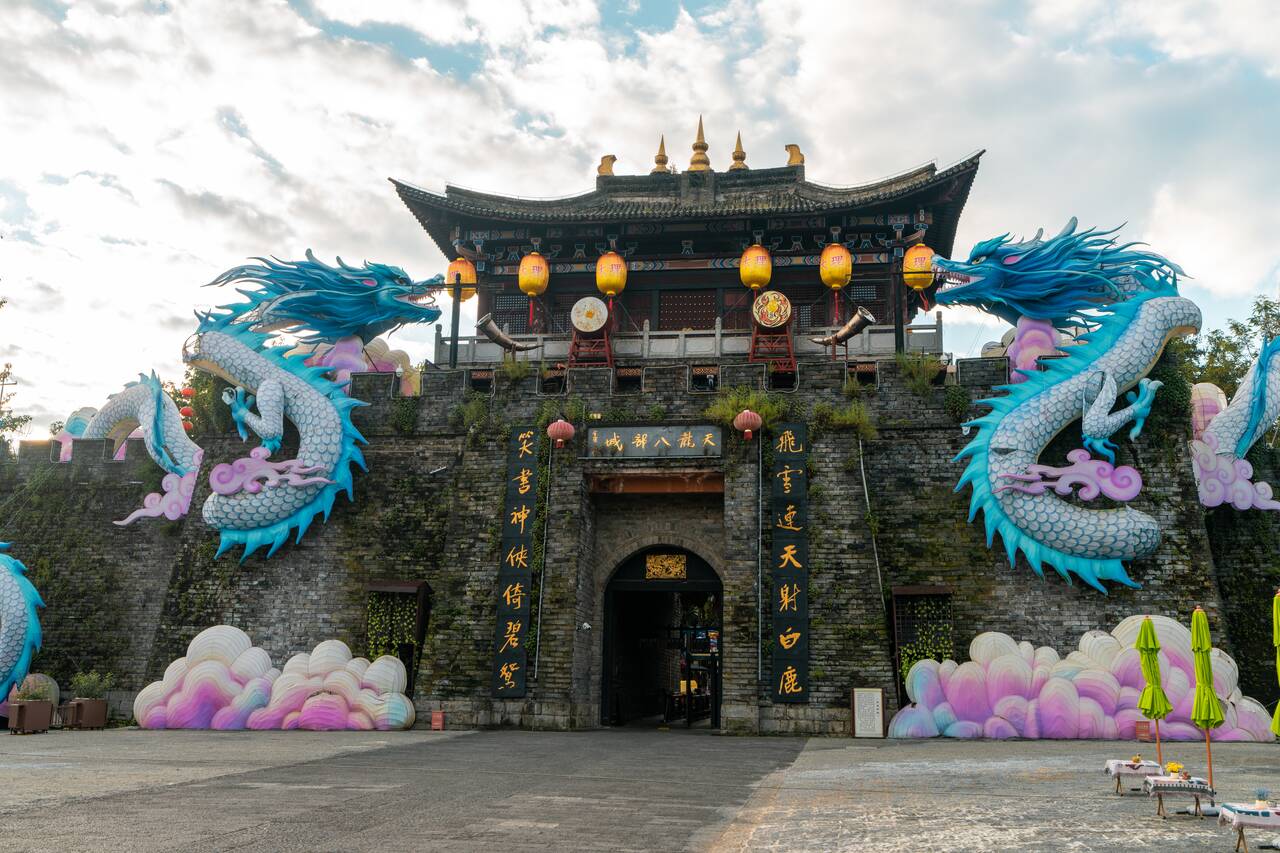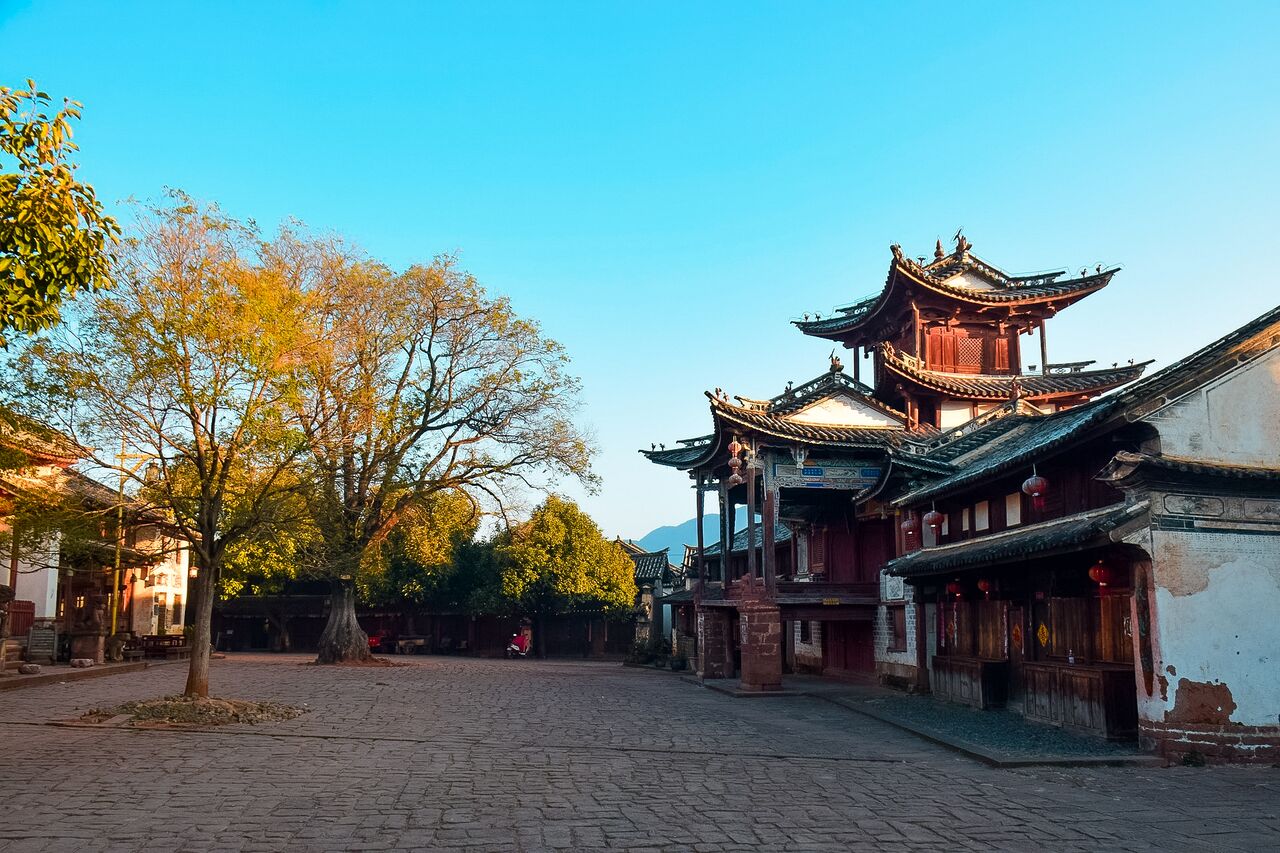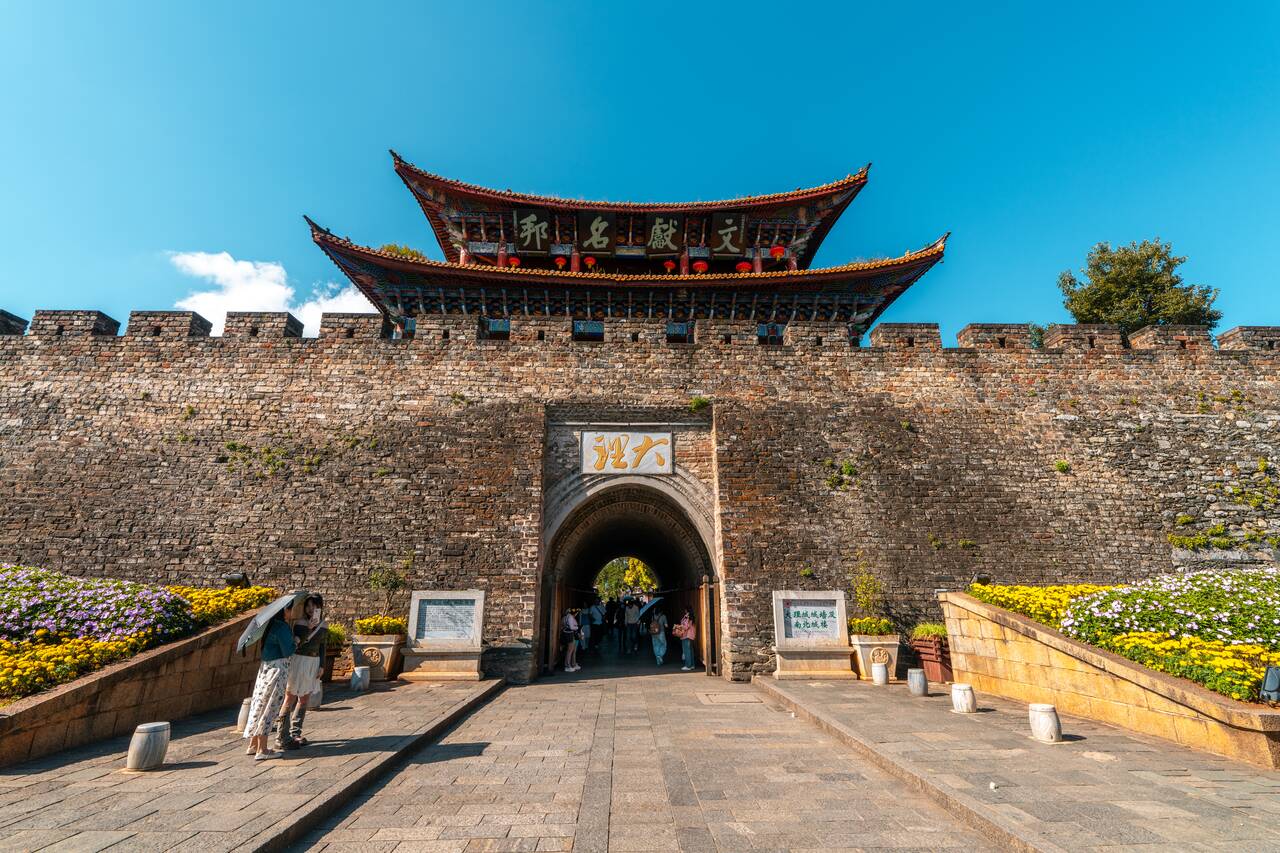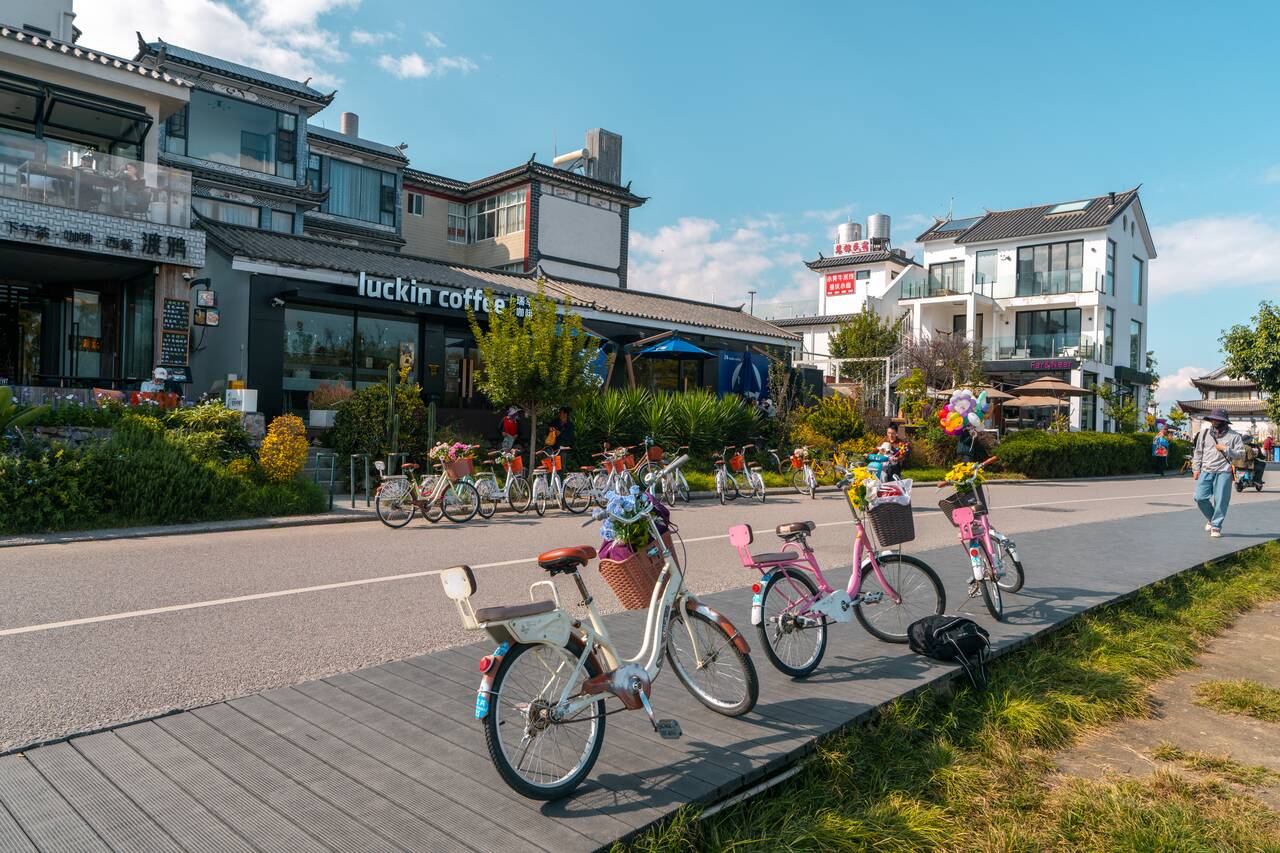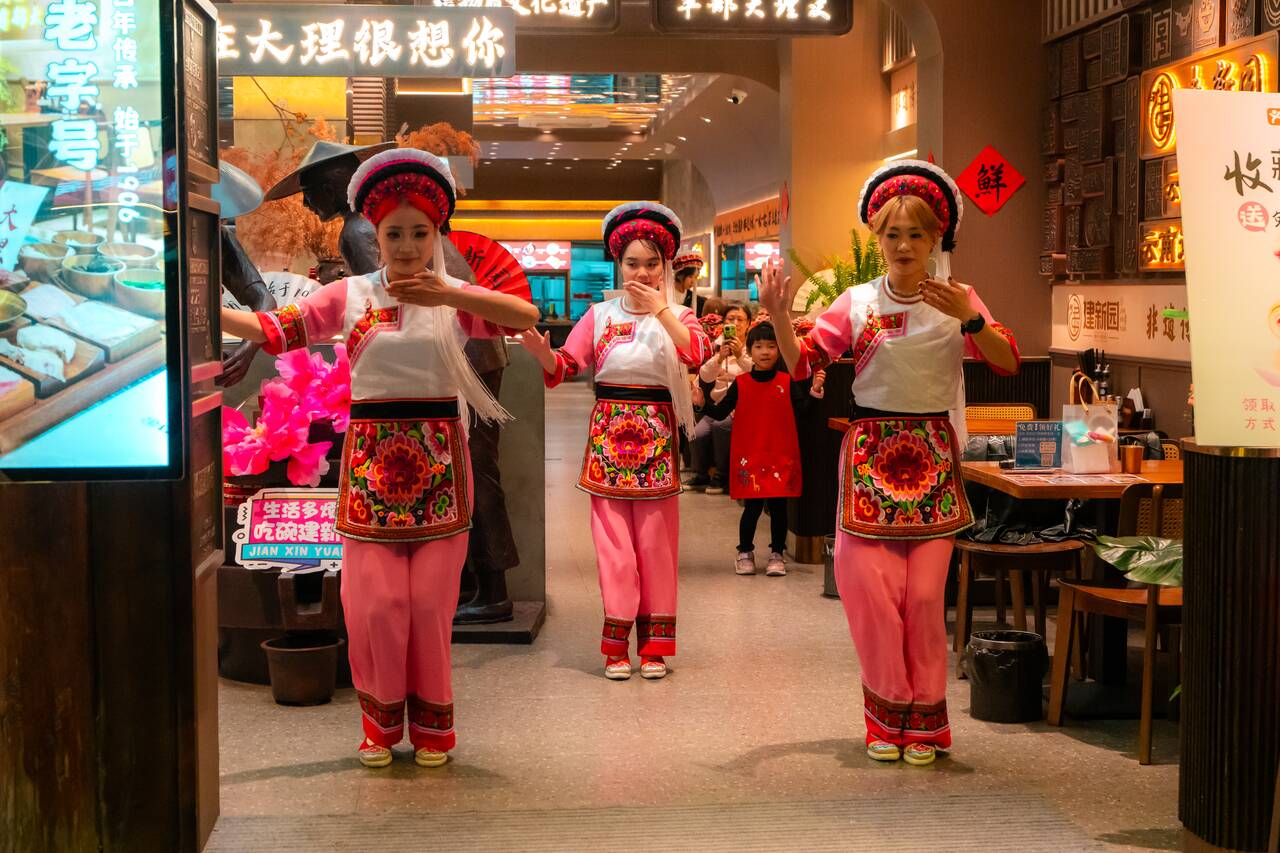Dali is one of Yunnan’s most charming and culturally rich destinations, where centuries-old Bai villages sit against the dramatic Cangshan Mountain range and the vivid blue, shimmering waters of Erhai Lake. It’s an excellent place to experience Yunnan’s stunning natural landscapes and gently acclimatize to higher altitudes before venturing deeper into the mountains.
From the 3,000+-meter-high Cangshan Mountain, where you can hike and acclimatize, to exploring the beautiful Bai heritage sites and strolling through the busy yet charming Dali Ancient Town or the bustling markets of Xizhou Ancient Town, there are countless things to do in Dali. In this guide, I’ll share all the information you need to plan a perfect trip here, so without further ado, here’s a complete travel guide to Dali!
- Dali Things to Do Map
- Where to Stay in Dali?
- 7 Best Things to Do in Dali
- Things to Know Before Visiting China
- When to Visit Dali?
- How to Get to Dali?
- How to Get Around Dali?
- How Many Days to Stay in Dali?
- What to Pack for Dali?
- Further Reading for China, Hong Kong, and Macau
Dali Things to Do Map
7 Best Things to Do in Dali
1. Hike Around Cangshan Mountain
One of the highest areas you can explore to acclimatize yourself with the high altitude of Dali is Cangshan Mountain, a majestic mountain range rising over 4,000 meters above sea level, located just west of Dali City. You can easily access it via the cable car station.
Cangshan is best known for its dramatic peaks, deep valleys, and lush forests with well-marked high-altitude trails that will take you through beautiful scenery, including crystal-clear streams, cascading waterfalls, and misty mountain views. At the top, you’ll reach a stunning viewpoint with panoramic vistas of an alpine lake and breathtaking views of the surrounding mountains.
It took me about half a day to visit Cangshan with the Ximatan cable car ride taking about 20 minutes one way. Once you arrive at Ximatan Upper Station, you can then begin the hike to the highest viewpoint platform at about 3966 meters above sea level.
- dali xianlai Inn (Budget)
- Yunbo Light Luxury Homestay (Dali Ancient City South Gate Branch) (Mid-Range) 👍 Top Pick
- Yunduan Nanshe Homestay (Dali Ancient City South Gate Branch) (High-End)
- Cangshan Cableway Round-trip Ticket
- The Three Pagodas Entry Ticket
- A Day Trip to Shaxi Ancient Village from Dali
The hike itself isn’t very long, taking only about 30 minutes, but the altitude can be challenging, especially if you’ve just arrived from sea-level cities or haven’t experienced high elevations before. At the lower cableway station, you can buy an oxygen canister and rent a jacket.
Personally, as long as you walk slowly and maintain steady breathing, you should be able to manage the altitude without needing supplemental oxygen. It's going to be terrible at first, but once you get the rhythm going, it should be smooth sailing from there.
There are 2 trails, one going to the Red Panda sightseeing area, and another to the viewing platform. I highly recommend you go to the viewing platform first as the distance is a bit shorter and you can beat the crowds and get there early. The trail climbs up all the way to the viewpoint with few breaks so keep at it and you will arrive eventually.
Once you are done, you can make your way down via the Red Panda route, although when I was there, the place was being renovated so I just hiked for an extra hour for nothing 😅. It should take you around half a day to complete this, so be sure to spare some time and pack snacks and water for the hike. You can buy them at the stations and rest stops up there, but it will be more expensive.
To get to Ximatan Cable Car Station, you can either take a Didi from Dali Ancient Town or catch a shuttle bus that runs between 9 AM and 4 PM daily from Dali Ancient City Visitors Center. You can book this shuttle bus here. Once you arrive, you can purchase your ticket at the entrance or online here. A shuttle bus will then take you up to the cable car station. The station is open daily from 8:00 AM to 3:30 PM and the ticket should cost 260 CNY.
When I visited, even though we arrived right at 8:00 AM, we had to wait, and we only boarded the cable car at 9:00 AM. If you want to avoid a long wait, it might be better to arrive a little later than the opening time. It's quite expensive for a half-day trip, but it is worth it if the weather is good and you are looking for something active to do in Dali.
Where to Stay in Dali?
Dali covers much of the area around Erhai Lake, and although the main city sits at the southern tip of the lake, the most popular place to stay is Dali Ancient Village, located on the western side of Erhai Lake, about a 45-minute drive from Dali City. Here are some recommended accommodations in Dali Ancient Village:
If you prefer a quieter place to stay and don’t mind traveling a bit farther, you might want to consider staying in Shaxi Ancient Village or Xizhou Ancient Village. Just keep in mind that it will be harder to reach some of the attractions I recommend in this guide, especially if you stay in Shaxi, as these places are quite far.
2. Explore the Three Pagoda Cultural Area
One of the most iconic landmarks in Dali is Chongsheng Temple and the Three Pagoda Cultural Area, located just a short Didi ride from Dali Ancient Town. This historic complex is famous for its three ancient independent pagodas, arranged in an equilateral triangle, which are among the oldest and best-preserved in Yunnan.
There are three pagodas of varying heights and ages located at the entrance of the temple, visible from across Dali. The central pagoda, Qianxun Pagoda, stands an impressive 69 meters tall and dates back over 1,000 years. The two smaller pagodas are 42.19 meters each, built later, and are octagonal with 10 stories.
Right around the corner of the Three Pagoda, you will find the Reflection Pool where you can get that epic shot of the Three Pagodas reflecting on the calm water of the pool. Be sure to go there and take some photos before continuing to explore Chongsheng Temple Complex.
The moment you walk past the Three Pagodas, you’ll get a glimpse of the true scale of the Chongsheng Temple Complex, which is massive, consisting of several temples and levels all aligned, facing east. It took me about 30 minutes to walk all the way up to the upper temple. While there wasn’t a grand panoramic view from the top, the Buddha statues inside are some of the finest you’ll see here.
If you want to see the iconic Three Pagodas set against the stunning Erhai Lake, the best vantage point is from the third floor of a pagoda located just behind the Three Pagodas, connected by a beautiful garden. From there, you can capture the perfect photo of the pagodas with the surrounding landscape. Going higher won’t give you a clearer view than this.
All in all, it is a great place to visit and you can easily spend an hour or 2 here, hiking all the way to the top and back down while enjoying the peaceful escape from the bustling ancient village. The temple is open from 7:30 AM to 6:30 PM with the last admission at 5:30 PM and the entry fee is 73 CNY. You can get it online here or from the entrance.
3. Stroll Around Dali Ancient Town at Night
Of course, when you are in Dali, you gotta visit Dali Ancient Town, a town with a long and rich history having served as the capital of both the Nanzhao Kingdom and the Dali Kingdom. Today, the place has been converted into a commercialized town like many other ancient villages in China, but it still preserves much of its traditional Bai architecture which is wonderful to explore.
The town’s main streets, such as Fuxing Road and Renmin Road, are lined with Ming- and Qing-style buildings, stone-paved lanes, and rivers running alongside. Foreigner Street, also known as Huguo Road, is a lively pedestrian street full of cafés, bars, art galleries, tie-dye shops, and antique stores.
I highly recommend visiting Dali Ancient Town at night, when the streets come alive with both locals and travelers gathering to eat, shop, and enjoy the lively atmosphere. If you are looking for something to eat, the street in front of the South Gate turns into a street food haven, with both sides lined with food carts. I often take an evening walk here to enjoy dinner and soak in the vibrant atmosphere.
There are many attractions inside the ancient town that you can visit during the day, such as local Bai temples, churches, and small museums scattered throughout. The town also offers a wide range of shopping opportunities, including Bai textiles, wood carvings, ceramics, and other handicrafts.
Be sure to go up to one of the gates to enjoy the view. On a clear day, you may even see Cangshan Mountain from there. Although it can be busy, crowded, and highly commercialized, the town is still worth visiting. The streets are beautiful, the old architecture is incredibly charming, and several historical sites are sprinkled throughout to keep you engaged.
4. Explore Xizhou Ancient Town
If you prefer a more rustic feel of an ancient town, yet still want beauty and charm, I highly recommend visiting Xizhou Ancient Town. You can then compare it with Dali Ancient Town and see which one you like best. Personally, I enjoy Xizhou Ancient Town during the day and Dali Ancient Town at night.
Walking through Xizhou feels like stepping into an open-air museum. Over 100 well-preserved Bai courtyard homes line its cobbled streets. Many of these traditional dwellings use the distinctive Bai layout, where a decorative wall faces the entrance. The buildings are beautifully detailed with carved beams, upturned eaves, colored paintings, and marble murals.
The main street running through Xizhou Central Square is Sifang Street. Along both sides of this narrow street, you’ll find small shops, local snacks like Xizhou Baba (a type of local dough pie), cafes, and handicraft workshops. To me, it feels more like a market than the typical street of a highly commercialized ancient village like at Dali Ancient Town, giving it a slightly more authentic atmosphere, in my opinion.
If you walk far enough, you will eventually reach an open area where a massive, spacious rice field stretches beneath a beautiful blue sky, straight out of a scene from a Studio Ghibli film. It is a popular photo spot for local tourists, featuring elevated walkways, cafés, and even a small train you can ride to explore the rice field 😂.
I spent several hours sitting at a nearby café, watching the world go by. It was a wonderful spot to rest and fully immerse myself in the surroundings, especially after a high-altitude hike on Cangshan Mountain. You can visit the area anytime, and entry is free. For a more authentic experience, I highly recommend visiting Xizhou Ancient Town.
5. Bike Around Erhai Lake
One of the main highlights of visiting Dali is experiencing the beautiful Erhai Lake, which feels more like being in Europe than in China. This stunning freshwater lake stretches approximately 42 kilometers from north to south and about 7 kilometers at its widest point. It is the second-largest highland lake in Yunnan and is a key feature that makes Dali stand out from other places in the province.
The name “Erhai” literally means “Ear Lake” because of its shape, which is said to resemble a human ear. The lake is dotted with small islands and fishing villages, each offering a glimpse of the local Bai culture. You can often see traditional Bai boats on the water, and many locals still rely on the lake for fishing and agriculture.
The lake is pretty big, with some areas more developed to facilitate tourism than others. The best area to begin your exploration is from Panxi S Bay, where you can rent a bicycle and explore the lake's bank at your own leisure. You can take a Didi there and rent a bike for around 30 - 40 CNY per day.
The area can get crowded as the day goes on, so I recommend visiting in the morning when you can enjoy the lake with fewer people. Along the lakeshore, you’ll find several restaurants and cafés where you can rest, as well as a few old temples dotting the banks.
You can easily spend half a day exploring by bike, even riding out to Xizhou Ancient Town, or simply relax by the lake before the crowds arrive in the afternoon and evening. The area is open 24/7 and entry is free.
6. Check Out Tianlongbabu Film and Television City
Tianlongbabu Film and Television City is a large, themed film set and tourist attraction located right next to the Ximatan Cable Car Station to Cangshan Mountain, which makes for a great place to drop by and check out after you are done hiking the mountain. It was originally built for the filming of the famous Jin Yong (Louis Cha) martial arts drama Demi‑Gods and Semi‑Devils.
The park is divided into several zones representing historical and fictional areas, including the Dali Kingdom, Liao Kingdom, Western Xia, and a Jurchen tribe area, all featuring beautiful architecture. Although these structures are newly built and have no historical significance, they provide a glimpse into what ancient China and Bai culture may have looked like in the past.
The park is open from 8:30 AM to 10 PM daily, and the entry fee is 38 CNY per person. You can buy the ticket at the entrance or get it online here. There is also a shuttle bus that costs 4 CNY departing from Dali Ancient City Visitors Center departing between 9 AM and 4 PM daily, and you can book the shuttle bus here.
7. Go on an overnight trip to Shaxi Ancient Village
Last but not least, if you are looking for the most authentic Bai traditional village, Shaxi Ancient Village is the best place to immerse yourself in their unique lifestyle and culture. This village is the most authentic of all, and it offers a real glimpse into the daily life of the Bai people, unlike the commercialized villages of Dali and Xizhou.
This Bai ethnic village is located remotely in the mountains, which is why it still retains its authenticity. The only way to get there is by road, which is about 2-3 hours by car from Dali Ancient Town or 4-5 hours by public buses and minivan. These leave from Dali North Bus Station, and you will have to transfer to a minivan in Jianchuan.
You can also catch a one-way shuttle bus from Dali Ancient Village or Railway Station with this organized shuttle service for around 108 CNY per person. It takes about 2 to 3 hours to get there and it leaves between 8:00 AM and 5:00 PM, once every hour. You can also go with a private tour as a day trip from Dali which should cost about 800 CNY for 4 people and it takes about 7 - 8 hours. You can book one here. I didn't have time to visit Shaxi myself, but it comes highly recommended by my friend who traveled extensively in this part of China.
Things to Know Before Visiting China
- Always Carry Your Passport: Everything revolves around your passport/ID in China, and it’s often used interchangeably as your main form of identification. Many major tourist attractions require you to show your passport when buying a ticket, and the ticket will then be linked to it. You’ll scan your passport again to enter. The same applies to high-speed trains. It’s best to carry your passport with you at all times while traveling in China.
- Get an eSIM: China’s cashless economy relies on constant internet access, so having a data connection is essential. I highly recommend getting an eSIM or a local SIM card for your trip. An eSIM is often better because the service is usually based in Hong Kong, which bypasses China’s Great Firewall, meaning you can access apps like Instagram and YouTube without a VPN. I suggest checking eSIM options on Klook or Trip.com, as they tend to be the most affordable.
- Use AMap to Navigate: Google Maps doesn’t work well in China, so local apps like AMap are much more informative and accurate for getting around. It even provides metro information, making it easy to navigate city subway systems. I used AMap throughout my entire trip, and it worked perfectly! In this guide, I’ll be linking locations with AMap links instead of Google Maps, so be sure to download it before your trip.
- Use LetsVPN to Bypass the Great Firewall: As you may know, many major websites such as Google, Facebook, Instagram, TikTok, and more are blocked in China. To access them, you’ll need a VPN like LetsVPN installed on both your phone and laptop before you arrive in China. This is crucial as once you're in the country, you won’t be able to search for or download VPN apps. I used LetsVPN during my trip, and it worked very well throughout. The service is affordable too, with a free tier offering limited data or a basic unlimited plan for just 5.99 USD per month.
- Connect Alipay with Your Credit Card: First, download Alipay from the app store, set up your account, and link it to your credit card. This will be one of the two main ways you’ll pay for services in China. Alipay also has mini-apps built in, such as Didi (China’s version of Uber), so you don’t need to download separate apps, and you can use them directly through Alipay. Very convenient!
- Get a Transport Card Working in Alipay: Once you have Alipay set up, you’ll need to verify your account before you can activate a transport card for metro and bus rides. First, if you’re not currently in the city you want to use, tap the city name in the top-left corner and select the correct city. After that, tap the “Transport” button and request a transport card. You’ll be asked to upload a photo of your passport for verification. Once approved, your transport card will be issued, and you can use the QR code to scan and pay for buses and metro rides.
- Get WeChat Set Up: WeChat is another essential app for communicating with locals, thanks to its built-in translation feature. It’s also widely used for payments as Alipay only works about 70% of the time, while WeChat is commonly needed for paying individuals, buying entry tickets at certain attractions, and more. Setting up WeChat can be a bit tricky though because you need verification from an existing user. The easiest way is to ask your hotel’s reception to help verify your account when you arrive in China, which is how I got mine activated.
- Use Trip.com / Trip App: For hotels, day trips, attraction tickets, train tickets, flights, and everything in between, you can use Trip.com or the Trip app to book all your travel needs. It’s very convenient, offers a great user experience, and has a generous cancellation policy that gives you more flexibility when traveling in China.
When to Visit Dali?
The best time to visit Dali is from March to June and September to November. During these months, the weather is mild, the skies are clearer, and visibility around Erhai Lake and Cangshan Mountain is at its best. This makes it perfect for outdoor activities like hiking, cycling, and photography.
In spring (March to May), temperatures are comfortable, flowers are in bloom, and the scenery around the lake is especially beautiful. Summer (June to August) can be warm and humid with frequent rain, but it’s also a lively time to visit, with more crowds and occasional downpours.
Autumn (September to November) offers the most stable weather of the year, with crisp air and clear days. It's an excellent time to explore the old towns and enjoy the landscape without the summer rush. Winter (December to February) is colder but mostly dry, making it a good option for budget travelers, though mountain areas can feel quite chilly and windy.
I visited in autumn, and although higher areas like Cangshan were cold, the temperature around the lake and the ancient towns was perfect. There were many clear days, manageable crowds (relatively speaking), and beautiful autumn colors. I highly recommend visiting during this time.
How to Get to Dali?
By Plane: Dali has its own airport, Dali Airport (DLU), located about 30 minutes from Dali City. There are regular flights from major Chinese cities like Kunming, Chengdu, Guangzhou, and Beijing. From the airport, you can take a Didi or airport shuttle to Dali City or nearby towns like Dali Ancient Town.
You can find cheap flights to Dali from Trip.com, Skyscanner, or Expedia.
By Train: Dali is accessible by high-speed and regular trains. The Dali Railway Station is well connected to Kunming and other parts of Yunnan. For those who are already in the southern part of China, this is the best way to get here. You can book the train here.
By Bus: There are long-distance buses to Dali from surrounding cities like Lijiang, Kunming, and Jinghong. Buses are frequent and affordable, but travel times are longer compared to trains or flights. I generally don’t recommend taking buses if trains are available, as I consider them a last resort in China.
How to Get Around Dali?
By Didi: Once you arrive in Dali, you can easily get around using Didi. It will take you from one ancient town to another as well as all around Erhai Lake for affordable prices. You can use it through Alipay mini app. You can read more about Alipay here. This was how I got around the lake most of the time.
By Cycling: Once you are near Erhai Lake, you can rent a bicycle from tourist hotspots around the lake like Panxi S Bay and you can ride along its bank and enjoy the scenery. It should cost around 30-40 CNY to rent a bike for a day here.
How Many Days to Stay in Dali?
I would recommend staying at least 2 nights, giving you one full day to explore. If you want to relax more and take a day trip to visit Shaxi Ancient Village, consider staying 3 nights and 2 days, or even spending a night in Shaxi to fully immerse yourself in the village.
What to Pack for Dali?
As you may already know, I am an advocate of light traveling, and indeed, packing light for a journey like this is a unique art form. Here are some packing tips for your upcoming trip to Dali, China:
- Walking/Hiking Shoes: With all the walking and possible hiking during your travel, a comfortable pair of shoes is a must. I recommend the Timberland 3-Eye Classic Boat Shoes that are my go-to pair for long strolls and hikes.
- Breathable Shirts: Given the potential for hot weather, pack a few breathable shirts for your outdoor adventures.
- Shorts/Jeans: Anticipate lots of walking during your travels? Be sure to pack some breathable shorts and a pair of Levi's jeans for when the weather cools. For women, leggings are excellent for both hot and cold climates, so consider packing some as well.
- Fleece Jacket: For colder weather, layering is the key, and a fleece jacket makes an excellent insulating layer. I recommend the Columbia Steens Mountain Fleece (for women).
- Outer Shell Jacket: An outer shell jacket is great for windy or rainy conditions. I highly recommend the Columbia Watertight Jacket (for women). It's lightweight, breathable, and even comes in a cool orange color.
- Down Jacket: In freezing temperatures, a down jacket is essential. The Columbia Men's Lone Fir Hooded Jacket (for women) is my choice. They are warm, lightweight, and available in various colors.
- Wool Beanie: A wool beanie is perfect for keeping your head and ears warm.
- Wool Gloves: I always have wool gloves handy to keep my hands warm in cold weather.
- Wool Socks: Don't forget to keep your feet warm with wool socks.
- Microfiber Towel: A Microfiber towel is the ideal backpacker's towel due to its lightness, quick drying, and compressibility.
- Camera: You should also pack a good camera for your trip so that you can capture all the beautiful experiences you might have. I recommend the Sony a7R V camera together with the Sony 24-70mm f2.8 GM II lens, which is probably the highest-performance camera and lens combination you can get right now.
- Power Bank: Keep your electronics charged on the go with a 20,000+ mAh Power Bank.
- Water Bottle: The Hydro Flask Trail Water Bottle is a great insulated water bottle to have with you in cities or on hiking trails. It is lightweight and can keep your water cold or warm for more than 12 hours. It's a total game-changer.
- Universal Adapter: You'll need just one universal adapter to plug in your electronics in any country you visit.
- Packing Cubes: Packing Cubes will help you save space in your backpack and keep all your belongings organized.
- Daypack: The Langly Alpha Globetrotter is my go-to everyday camera backpack. It's large enough to carry all my travel gear, and it comes with plenty of slots and pouches. Plus, it's stylish as hell!
- Large Backpack: You will need a large backpack to carry all of your stuff. I recommend the Osprey Atmos AG 65L backpack. With excellent weight distribution and a lifetime guarantee, you can't go wrong with Osprey.
For more information on what I pack in my backpack for this trip, check out: My Packing List: 60 Travel Essentials.
Now that we have all the information we need, it's time to start planning your trip! Here are some resources to help you get going:
Are you planning to travel independently? Be sure to check out my guide on How To Plan A Backpacking Trip here.
Further Reading for China, Hong Kong, and Macau
Looking for more information about your trip to China, Hong Kong, and Macau? Here is a collection of articles that you might find useful:
- Want to spend 5 days in Hong Kong? Here's a complete itinerary for you: Hong Kong in 5 Days: A Backpacker's Itinerary.
- First time in Hong Kong, but you are not sure where to begin? This is the guide for you: Visiting Hong Kong: 12 Awesome Things to Do & More.
- Macau is often called the Las Vegas of Asia, offering larger-than-life entertainment, a unique blend of Portuguese heritage, and so much more. If you’re planning a visit, be sure to check this out: Discover Macau: 10 Cool Things to Do & More.
- Guangzhou is the fourth-largest city in China and one of the wealthiest, with major trade activities taking place in and around the city for over 2,000 years. With so much history and so many places to explore, you’ll definitely want this comprehensive travel guide: Explore Guangzhou: 12 Incredible Things to Do & More.
- Guilin is, hands down, one of the most beautiful places I’ve seen in China. If you’re planning to visit, here is the comprehensive travel guide I wish I had! Check it out: Visiting Guilin: A Complete Travel Guide
- Looking for a complete itinerary to Guilin? Check out: 5-Day Itinerary in Guilin
- Want to visit Huangguoshu Waterfall, the largest waterfall in Asia? Check out this travel guide: Huangguoshu Waterfall: A Complete Travel Guide
- Visiting Guizhou and want to experience the rich culture of the Miao people? Why not visit Xijiang, the largest and arguably the most beautiful Miao stilted village in the region. Here’s a complete travel guide: Xijiang Village: A Complete Travel Guide
- Yulong Snow Mountain, one of the most beautiful mountains in Yunnan, is located in Lijiang, a destination you shouldn’t miss when visiting China. If you plan to visit Lijiang, check out our travel guide: Exploring Lijiang: 10 Best Things to Do & More
- The mythical town of Shangri-La, made famous by the novel "Lost Horizon", is real and located in China. If you want to visit Shangri-La, this travel guide provides all the information you need to plan the perfect trip: Discover Shangri-La: A Complete Travel Guide
- For more articles about China, visit the China travel guide, or explore my guides to Hong Kong and Macau.
- Planning a trip to East Asia? Explore all my articles on the East Asia Travel Guide page.
- You can find all my Asia-related articles here: Asia Travel Guide.
- For more of my travel guides like this, visit my Destinations page.
Disclosure: This post may contain affiliate links.


